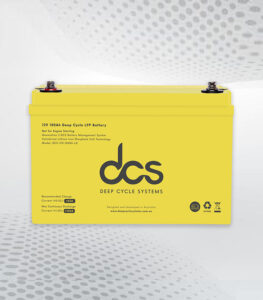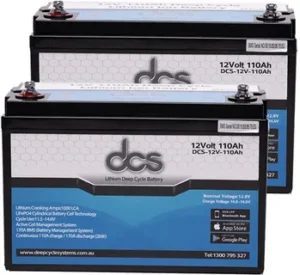Energy efficiency and indoor air quality have become paramount in creating comfortable living spaces in today’s ever-evolving world. One innovative solution that has gained significant traction is HRV heating, which stands for Heat Recovery Ventilation. These systems enhance ventilation and recover heat, ensuring your home remains warm without skyrocketing energy costs. In this blog post, we will explore the various facets of HRV heating system, its benefits, and how they can transform your home environment while keeping your energy bills in check.
- Understanding Heat Recovery Ventilation Systems
- The Importance of Indoor Air Quality in Modern Homes
- Benefits of HRV Heating Systems for Energy Efficiency
- How HRV Systems Maintain Optimal Home Temperatures
- Comparing HRV Systems to Traditional Ventilation Methods
- Choosing the Right HRV System for Your Home
- Installation and Maintenance Tips for HRV Ventilation System
- Real-World Examples and Case Studies of HRV System Benefits
- Conclusion
- Frequently Asked Questions
Understanding Heat Recovery Ventilation Systems
Heat Recovery Ventilation (HRV) systems facilitate balanced airflow by recovering heat from stale indoor air and transferring it to incoming fresh air. This process involves two airstreams passing through a heat exchanger, allowing the heat to transfer without mixing the air. The pre-warmed incoming air reduces the energy needed to maintain a comfortable indoor temperature, thus enhancing energy efficiency. HRV systems operate quietly and effectively, providing a consistent supply of fresh air that contributes to better indoor air quality. These systems are designed to be energy-efficient and user-friendly, making them a popular choice for modern homes focused on reducing energy consumption.
The Importance of Indoor Air Quality in Modern Homes
Indoor air quality (IAQ) is essential to maintaining a healthy living environment in modern homes. Today’s energy-efficient homes are often tightly sealed to conserve heat and reduce energy consumption. However, this can inadvertently lead to a build-up of indoor pollutants such as dust, mould, and volatile organic compounds (VOCs). These pollutants can adversely affect the health of occupants, causing respiratory issues, allergies, and general discomfort. Poor IAQ has been linked to various health problems, including asthma and chronic bronchitis.
HRV heating systems address these IAQ concerns effectively by ensuring a continuous exchange of stale indoor air with fresh outdoor air. The system’s ability to recover heat during this exchange process means you don’t have to compromise on energy efficiency while improving air quality. HRV systems create a healthier indoor environment by expelling indoor pollutants and introducing filtered, pre-warmed air.
Additionally, modern HRV units come equipped with advanced filtration mechanisms that capture finer particles and contaminants, further enhancing air quality. This is particularly beneficial for households with individuals who have pre-existing health conditions or sensitivities. HRV heating systems contribute significantly to creating a healthier and more comfortable home atmosphere by mitigating the risks associated with poor IAQ.
Benefits of HRV Heating Systems for Energy Efficiency
HRV heating systems provide substantial energy savings by reclaiming heat typically lost with traditional ventilation methods. Conventional systems often result in significant heat loss, particularly during colder months, leading to increased energy consumption and higher utility bills. By capturing and reusing the heat from outgoing stale air, HRV systems effectively minimise the need for additional heating. This keeps energy costs down and ensures a more sustainable approach to maintaining indoor comfort.
The energy efficiency of HRV systems extends beyond mere heat recovery. These systems operate efficiently, using low-power fans and advanced heat exchangers to maximise performance without drawing excessive energy. This is particularly beneficial for homes in regions with extreme weather conditions, where maintaining a comfortable temperature can be energy-intensive.
Incorporating an HRV heating system also contributes to a home’s overall energy efficiency rating, potentially increasing property value. Homes equipped with these systems often experience a notable reduction in heating expenses, with studies indicating potential savings of up to 30% annually. This makes HRV systems an attractive option for eco-conscious homeowners looking to reduce their carbon footprint while enjoying lower energy costs.
How HRV Systems Maintain Optimal Home Temperatures
HRV heating systems excel at maintaining consistent indoor temperatures, providing comfort across all seasons. During the winter, these systems capture heat from the outgoing stale air and transfer it to the incoming fresh air, effectively pre-warming it. This reduces the burden on your primary heating system and ensures a steady, comfortable temperature throughout your home. In contrast, HRV systems can help expel warmer indoor air during the summer, contributing to a cooler interior environment. This dual functionality allows the system to adapt to seasonal changes efficiently.
Furthermore, the precision of HRV systems lies in their design. Advanced heat exchangers and low-power fans ensure that the heat recovery process is both practical and energy-efficient. This meticulous balance provides thermal comfort and minimises the energy needed for heating and cooling.
For homes in regions with extreme temperature variations, HRV systems prove to be incredibly beneficial. They reduce the reliance on conventional heating and cooling methods, which can be energy-intensive. As a result, homeowners can enjoy a stable indoor climate without experiencing sharp spikes in their energy consumption or utility bills.
Comparing HRV Systems to Traditional Ventilation Methods
Traditional ventilation methods, such as exhaust fans or open-window ventilation, are straightforward and have been used for years. However, they have significant drawbacks, particularly regarding energy efficiency and heat retention. Exhaust fans, while effectively expelling stale air, remove valuable heat from the room. This necessitates additional heating to maintain a comfortable indoor temperature, leading to increased energy consumption. Similarly, open-window ventilation allows fresh air in but also lets warm air escape, resulting in higher heating demands.
In contrast, HRV heating systems offer a more advanced solution by recovering heat from outgoing stale air and transferring it to incoming fresh air. This retains warmth and significantly reduces the need for additional heating. As a result, HRV systems are far more energy-efficient, maintaining a balanced indoor climate without the associated heat loss seen in traditional methods.
Additionally, HRV systems provide a continuous and controlled airflow, ensuring fresh air is consistently supplied while stale air is expelled. This regulated ventilation is a stark improvement over traditional methods’ sporadic and less efficient air exchange. By optimising ventilation and heat recovery, HRV heating systems present a superior alternative for modern, energy-conscious homes.
Choosing the Right HRV System for Your Home
Selecting the right HRV heating system for your home requires careful consideration of various factors to ensure optimal performance and energy efficiency. The size of your home is a critical determinant, as larger spaces necessitate more robust systems to maintain adequate ventilation and heat recovery. Insulation quality also plays a pivotal role; well-insulated homes retain heat more effectively, potentially allowing for a smaller HRV unit.
Assessing your specific ventilation needs is equally important. Homes with higher occupancy or areas with high pollution levels may benefit from advanced filtration features available in some HRV models. Additionally, it’s essential to consider your region’s climate. An HRV system with enhanced heat exchange capabilities can significantly benefit areas with extreme temperatures.
Different models cater to varying requirements, from compact units ideal for apartments to more significant, centralised systems suited for extensive properties. Modern HRV systems also come with various features, such as programmable timers, remote control options, and integration with smart home systems, offering added convenience and customisation.
Consulting with a professional can help you navigate these options and select the most suitable HRV system. An expert assessment will consider your home’s unique characteristics and budget, ensuring you invest in a system that delivers comfort and efficiency. Proper sizing and installation are crucial to maximise the benefits of your HRV heating system.
Installation and Maintenance Tips for HRV Ventilation System
Proper installation and regular maintenance are crucial for the optimal performance of your HRV ventilation system. When installing an HRV ventilation system, it is essential to ensure that the unit is correctly sized for your home’s needs and that the ductwork is adequately insulated to prevent heat loss. Positioning the intake and exhaust vents strategically around the house is vital to maximise efficiency and airflow.
Once installed, maintaining your HRV system involves routine checks and cleaning. The filters should be inspected every three to six months and cleaned or replaced as needed to ensure unobstructed airflow and optimal air quality. The heat exchanger core should be cleaned at least once a year to maintain its efficiency. This can typically be done using a soft brush or a vacuum cleaner to remove dust and debris.
To maintain proper ventilation, it is also important to inspect the outdoor vents for blockages, such as leaves or debris. Ensuring the drainage system is clear will prevent moisture build-up within the unit, which can lead to mould growth. By adhering to these maintenance tips, you can ensure your HRV system runs efficiently and continues to provide clean, fresh air to your home.
Real-World Examples and Case Studies of HRV System Benefits
Real-world applications of HRV heating systems have shown remarkable benefits in residential and commercial settings. For instance, one family living in a modern, energy-efficient home saw a 25% reduction in their heating expenses after installing an HRV system. They also noticed significantly improved indoor air quality, reducing respiratory issues and allergies among family members.
In another case, a small office building integrated HRV technology to address their high energy consumption and poor air quality. The result was a noticeable decrease in energy bills and a healthier work environment, with employees reporting fewer headaches and a general increase in productivity.
A more extensive example involves a multi-unit residential complex implementing HRV systems across all units. The management observed a substantial cut in overall heating costs and enhanced tenant satisfaction due to improved air quality and consistent indoor temperatures. These case studies underline the versatility and effectiveness of HRV systems in various scenarios, showcasing their potential to deliver significant energy savings and health benefits.
Conclusion
HRV heating systems present a versatile and effective solution for enhancing your home’s ventilation while significantly improving indoor air quality. These systems leverage the principles of heat recovery, ensuring your home remains comfortably warm without excessive energy consumption. By capturing and reusing the heat from outgoing stale air, HRV systems minimise the reliance on conventional heating methods, resulting in substantial energy savings.
HRV systems also offer the added benefit of enhancing your home’s energy efficiency rating, potentially increasing property value. With features such as programmable timers, remote control options, and smart home integration, modern HRV systems provide convenience and customisation to meet the specific needs of your household. Investing in an HRV heating system is a forward-thinking decision, combining comfort, efficiency, and sustainability to create a superior living space.
Frequently Asked Questions
What is the difference between HRV and ERV systems?
HRV systems primarily focus on heat recovery, whereas Energy Recovery Ventilation (ERV) systems also manage humidity levels, making them suitable for more diverse climates.
Can I install an HRV system myself?
While some homeowners may attempt DIY installation, professional consultation is recommended to ensure optimal system performance and proper integration with your home’s infrastructure.
How often should I maintain my HRV system?
At least once a year, regular maintenance is advisable. This includes cleaning or replacing filters and inspecting other system components to ensure efficient operation.
Are HRV systems noisy?
Modern HRV systems are designed to operate quietly, with many models incorporating noise-reduction features to ensure minimal disruption.
What are the costs associated with HRV installation?
The installation costs for an HRV system can vary significantly based on factors such as the size of your home and the specific system chosen. Consulting a professional will provide a tailored estimate to suit your particular requirements.
| Related Business Listings |
| Contact Directory |
| Local Business Profiles |




